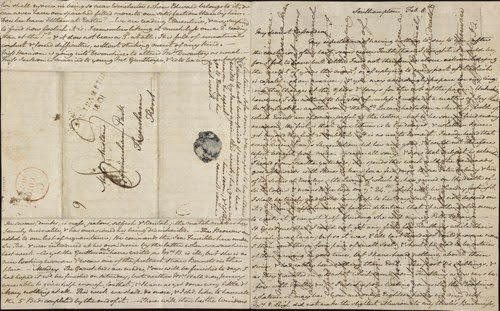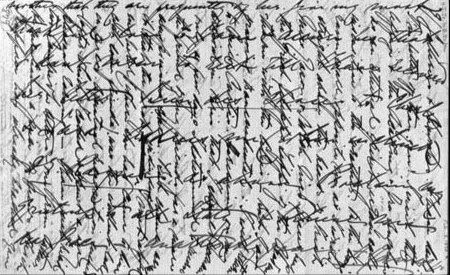Well, ladies and gents!
In my previous article, we talked about Regency Letter-Writing Implements.
Many of you found this topic very interesting and asked me many questions about the “cross-writing” technique, so I decided to clarify this topic a little!
Keep reading, this article is going to be a fun one 😉

During the Regency Era, the paper was scarce and, therefore, an expensive commodity. Because of that, a writer would not waste paper by leaving large spaces empty. People of the era respected an object that wasn’t taken for granted.

The paper was so valuable that they had developed the “cross-writing” technique. In order not to leave much empty space, letters would be crosswriten.

When the writer reached the bottom of the page, he turned the paper ninety degrees and added a second layer of text. One would have to first read it the way they would normally read a letter, focusing only on the lines across the page. Then turn the page to read the cross writing, ignoring the first lines.

Writing on a thin paper would mean that the words would also be visible from the other side. Sometimes letters were even re-crossed. This means that the writer, after finishing writing in crossed style, went back to turn the page forty-five degrees and cross write over it again. This way, they could fit six pages of writing onto one sheet of paper.

One may find cross-writing hard to read it at first but the mind has a way of adapting in new patterns easily, and cross-written letters are, in truth, surprisingly legible! Fascinating, right?
Once you become familiar with it, one learns to adjust and learn to ignore the other words. Of course, it took some practice for the people of the era to learn how to write or read such documents…but hey, the result is the same!

From all the above we can understand that cross-writing was used for various reasons. It was a technique that saved writing paper when the paper was scarce or expensive. It was a method to save money when sending the letter through the Post Office. And finally, it was a way to add some privacy to personal correspondence, because it took extra effort for a person to read it!

Many examples of this technique can be found online, including ones by famous writers of the era such as Henry James, Jane Austen, and Charles Darwin.
Well, that’s it, sweetie!
Thank you for reading this article of mine! Please let me know your thoughts about it—did you enjoy it?
If there is anything else you’d be interested in reading about the Regency Era, feel free to let me know…
…and who knows? Maybe you will read about it soon!
Written by Olivia Bennet

 Share this book
Share this book